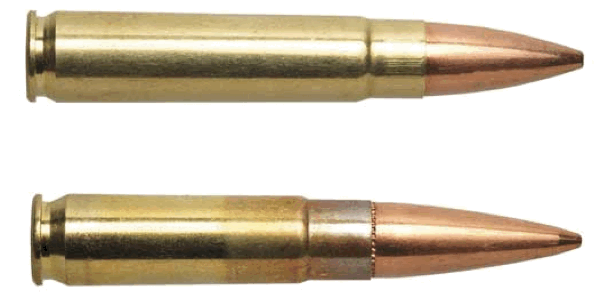 The .300 HAM’R (top) uses a stubbier bullet and a much longer case to generate a significant increase in case volume over the .300 BLK (bottom)
The .300 HAM’R (top) uses a stubbier bullet and a much longer case to generate a significant increase in case volume over the .300 BLK (bottom)
 The .300 HAM’R (top) uses a stubbier bullet and a much longer case to generate a significant increase in case volume over the .300 BLK (bottom)
The .300 HAM’R (top) uses a stubbier bullet and a much longer case to generate a significant increase in case volume over the .300 BLK (bottom)
Built to bring .30-30 ballistics to the AR platform, the .300 Ham'r is on-target as a modern-day hunting cartridge.
What Makes the .300 Ham'r Such A Potent .30 Caliber:In 2018, Bill Wilson of Wilson Combat announced the .300 Ham’r to match or better .30-30 Winchester performance in an AR magazine-length round. Thus, the cartridge was hatched to compete with the 6.5 Grendel, 6.8 SPC, 7.62×39 and .300 Blackout, with an eye toward killing wild pigs, thus the nod to “ham” in the name.Wilson himself says, “The project originally started way back in 2005, when J.D. Jones sent me one of his .300 Whisper uppers and a set of dies. Being an avid hunter, my primary interest was terminal performance, and the .300 Whisper just didn’t get the job done for me. So, at that point, I moved on to the 6.8 SPC and did a lot of work with it, and I killed a lot of hogs and deer.”
Then, in 2008, Remington came out with the .30 Rem. AR, and Wilson started getting the terminal performance on game that he was after. However, that caliber has its share of issues, such as a proprietary upper receiver, bolt carrier group and magazine. Also, shortly after Remington brought this cartridge to market, it quit supporting it. Wilson was also familiar with the 7.62×40, originally the brainchild of Kurt Buchert. Wilson Combat brought that round to market as the 7.62x40WT, a well-balanced cartridge that accepted virtually every .30-caliber bullet in the 110- to 135-grain weight range. However, to achieve this with the long-pointed bullets, the case length had to be limited to 1.565 inches, which wouldn’t allow the 7.62x40WT, in a rifle utilizing a 5.56/.223 bolt, to equal the legendary and time-proven .30-30 Winchester in terminal performance.Wilson then selected bullets he wanted to use and reverse-engineered the case length to fit within the AR magwell, determining he could get .040-inch more case length than the 7.62×40 and .260-inch more than the .300 Blackout. Ron Reiber of Hodgdon Powder Company then recommended Hodgdon’s new CFEBLK powder, which improved accuracy and velocity with less pressure. A 1:15 twist rate for the barrels finished the equation.
General CommentsThe .300 Ham’r has noticeable velocity and energy advantages over factory .300 Blackout rounds at the muzzle. With a 16.25-inch barrel, the .300 Ham’r sends a Sierra 110-grain hollowpoint to 2,600 fps with 1,651 ft-lbs. of energy, compared to the Hornady Black 110-grain V-Max at 2,395 fps MV and 1,401 ft-lbs. of energy. Likewise, the .300 Ham’r beats the 7.62×39 in a 16.25-inch barrel. The Ham’r shoots a Hornady 150-grain SST to a muzzle velocity of 2,240 fps with 1,671 ft-lbs. of energy. The factory 7.62×39 in the same barrel length and bullet weight (Winchester 150-grain Razorback XT) develops 2,056 fps and 1,408 ft-lbs. Out of a compact .30-30 lever-action with a 16-inch barrel, the shooter can expect to push a 150-grain bullet to about 2,250 fps.Wilson Combat supports the handloader with Lee and RCBS reloading dies, a Wilson Combat headspace/bullet seating gage, “WC 300 Ham’r” headstamped cases, and .308-caliber bullets. Wilson Combat has also introduced five AR-pattern rifles for the new chambering: Bill Wilson Ranch Rifle package, Tactical Hunter Model, Ultralight Ranger Model, Lightweight Hunter Model and the Ranger Model.
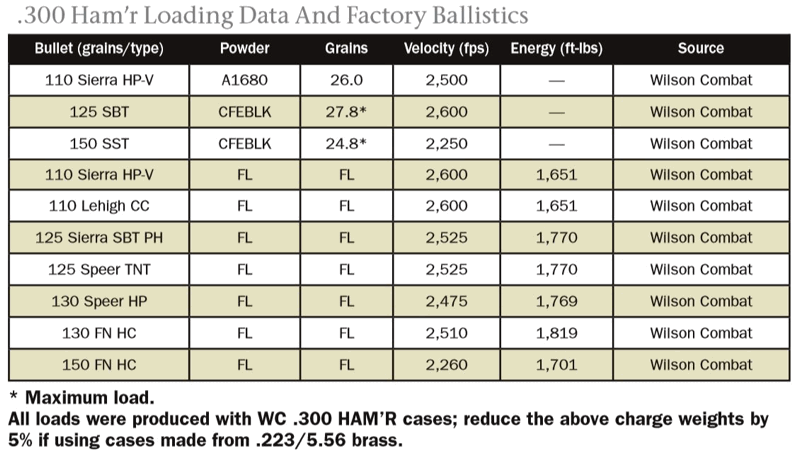
THE 6MM ARC (ADVANCED RIFLE CARTRIDGE)
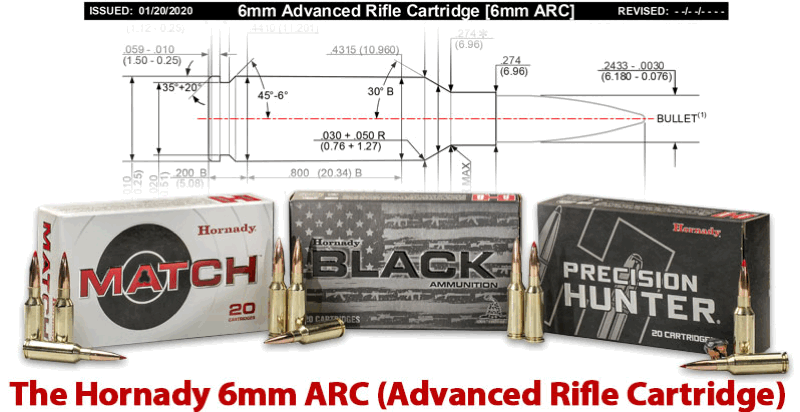
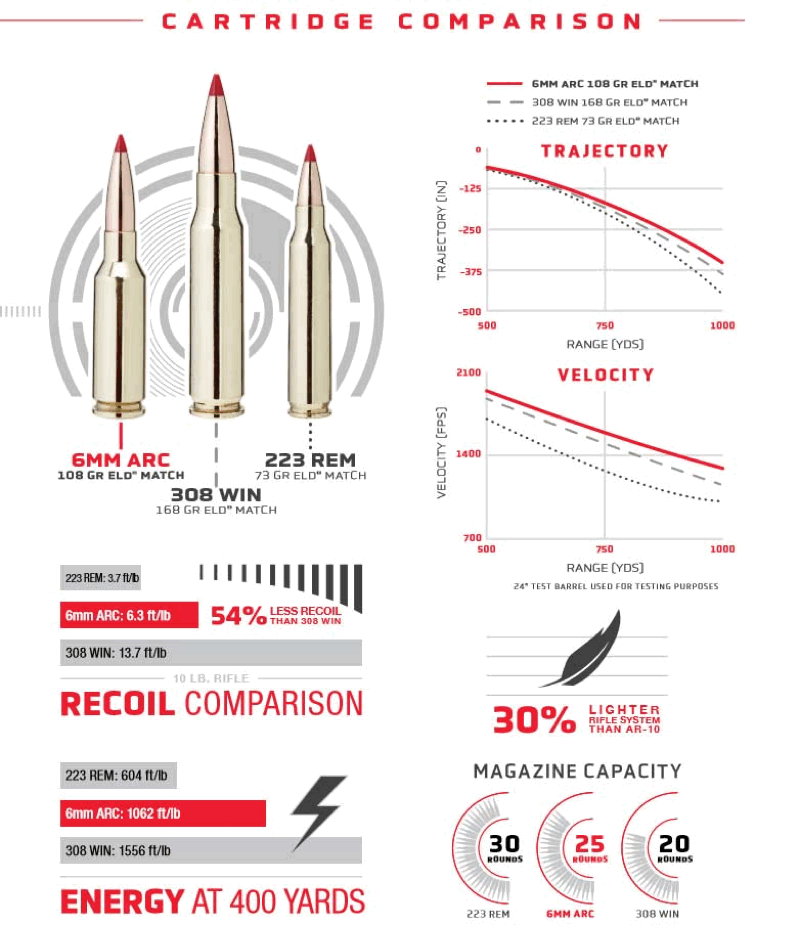


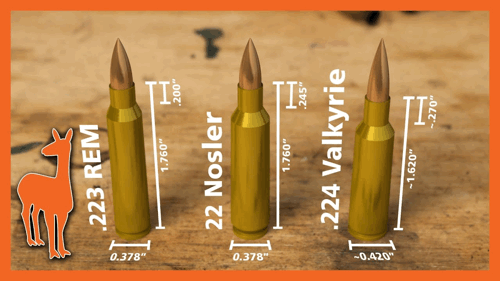
Experience what shooters around the world are calling the ultimate varmint hunting platform when you transform your standard AR into a 22 Nosler. Approaching 22-250 velocities in a significantly smaller package the 22 Nosler yields 25% more case capacity than the 223 Rem/ 5.56 NATO, resulting in 14% more velocity and 30% more energy at the muzzle. The effortless two-step conversion allows shooters to achieve lightning fast, hard-hitting performance with popular varmint bullets, pushing a 55gr. Nosler Ballistic Tip at supercharged speeds of 3,350 fps and a 77gr. Custom Competition bullet at 2,950 fps.
Long Range Loads

|
Varmint Ammunition 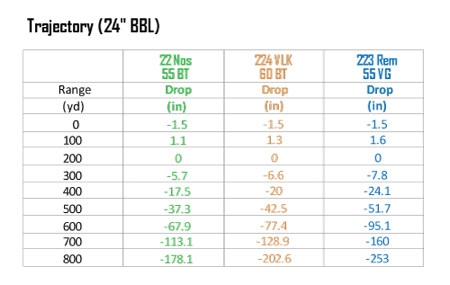

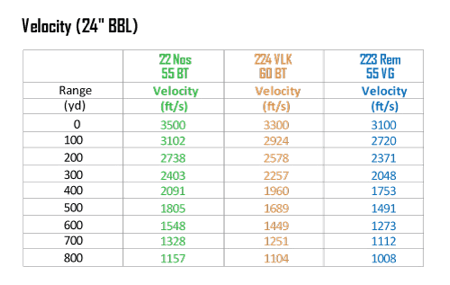
|
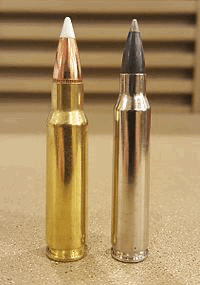
6.8 MM x 47 REMINGTON SPC BALLISTICS |
||||||||
| BULLET | VELOCITY (fps) | ENERGY (ft-lbs.) | ||||||
| Muzzle | 100 yd. | 200 yd. | 300 yd. | Muzzle | 100 yd. | 200 yd. | 300 yd. | |
| 115-gr. FMJ | 2,800 | 2,523 | 2,202 | 2,017 | 2,002 | 1,622 | 1,250 | 1,039 |
| 115-gr. BTHP | 2,800 | 2,535 | 2,285 | 2,049 | 2,002 | 1,644 | 1,345 | 1,075 |
| 115-gr. MK | 2,800 | 2,535 | 2,285 | 2,049 | 2,002 | 1,644 | 1,345 | 1,075 |
| ∗ 24-inch Barrel ∗ | ||||||||
The 6.8mm Remington SPC
|
||||||||